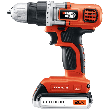Essential Woodworking Tools
Written by Lee Wyatt (last updated January 15, 2020)
If there is one mistake that any and all new home improvement enthusiasts make, then it is to begin a project without the proper tools. Instead of buying your tools in an ad hoc manner for your next woodworking project, why not make sure you know what you need? Here is a list, followed by a brief description, of the essential woodworking tools you really need to have if you are going to be doing any type of project that involves wood.
- Claw hammer. The claw hammer is perhaps one of the most commonly used tools around. In fact, the claw hammer is what most people have used, and even envision when they think of this particular tool. Make sure that you have one you can easily handle, is in good working condition, and doesn't weigh to much for you.
- Layout square. Simply put, a layout square is a wonderful woodworking tool that you can use to make, and mark, a quick square line in addition to any angle line of up to 45 degrees. While these will come in many different sizes, the one that you really need to have will be about six inches.
- Measuring tape. How will you know what length to cut your next piece of wood without help from a measuring tape? This particular tool can come in a wide variety of lengths, and retractable styles. Make sure that you choose one that is no shorter than 25 feet, and automatically retracts for your tool kit.
- Utility knife. A utility knife is great for scoring wood to know where you can cut, clean up some rough work that you have done, or even open up some supplies that you need to use.
- Chisels. Chisels come in handy when you need to clean out any waste wood that may be in your way on joint work or mortises. Make sure that you have a variety of sizes so that you have a bit of flexibility when working.
- Nail sets. Nail sets are fairly similar to chisels in looks, but have a different use. A nail set is used to help make sure that nail heads are either flush with the wood you are working, or just a little beneath the surface of the wood. As with the chisels, make sure that you have several different sizes to work with.
- Levels. Levels are the tool to use when you are looking to see if something is straight, It doesn't matter if you are trying to get the wood perfectly horizontal, vertical, or even at an angle (in some cases) a level can tell you what you need to know.
- Screwdrivers. While nails are good at holding some things together, they have nothing on screws. That being said, how are you going to get the screws in without the help of a screwdriver? Simply make sure that you have straight edge, and Philips head to ensure that you have all your bases covered.
- Sliding bevel. A sliding bevel is a tool similar in nature to a square, but is different in one major way. This particular tool can be adjusted to just about any conceivable angle, and locked into place. Frankly this tool is a necessity when you are having trouble figuring out how to duplicate a particular angle.
- Block plane. The perfect tool for shaving or sanding down thin pieces of wood. In fact, it can also come in handy when you are looking to do some clean up of rough-cut wood as well.
Author Bio
Lee Wyatt
Contributor of numerous Tips.Net articles, Lee Wyatt is quickly becoming a regular "Jack of all trades." He is currently an independent contractor specializing in writing and editing. Contact him today for all of your writing and editing needs! Click here to contact. Learn more about Lee...
Principles of Stress Management
One of the biggest adversaries to an organized life is stress. By understanding the principles of stress management you ...
Discover More
Installing a Baseboard
To begin installing your own baseboards, you don't need to have a lot of money, or even to have a whole lot of ...
Discover More
Killing Dandelions without Killing Your Grass
While dandelions may be a favorite of children, they aren't exactly all that good for your grass. Unfortunately, if the ...
Discover More
More Home Improvement Tips
Essential Tools for the Home Plumber
If you are thinking of doing any type of plumbing work yourself, you need to make sure that you have the right tools for ...
Discover More
Removing Stripped Door Screws
Whether you need to replace a broken down storm door, or you simply want a change style, you will need to remove a few ...
Discover More
Keeping Nails from Splitting Wood
Have you ever tried to hammer a nail into a piece of wood, say for a repair or something, only to have the wood split on ...
Discover More

Comments